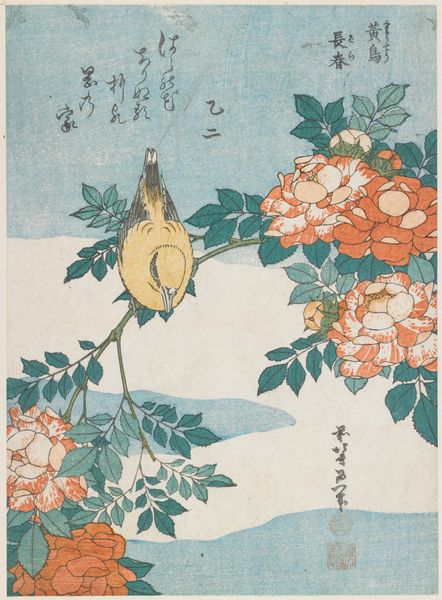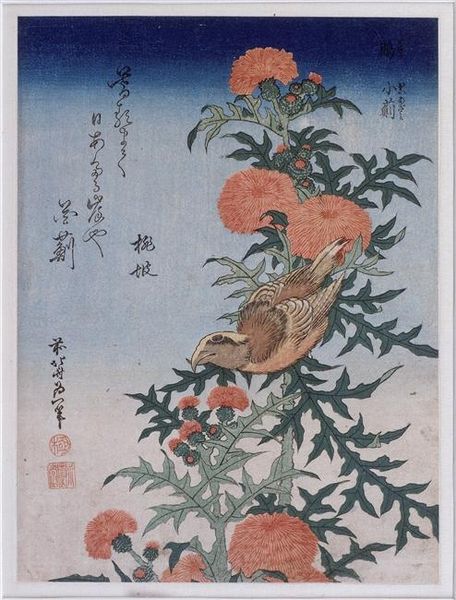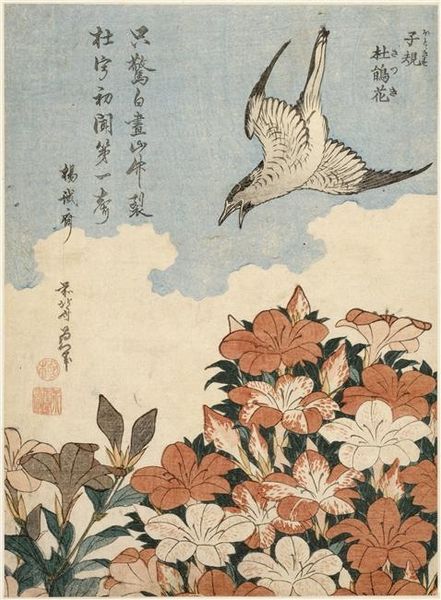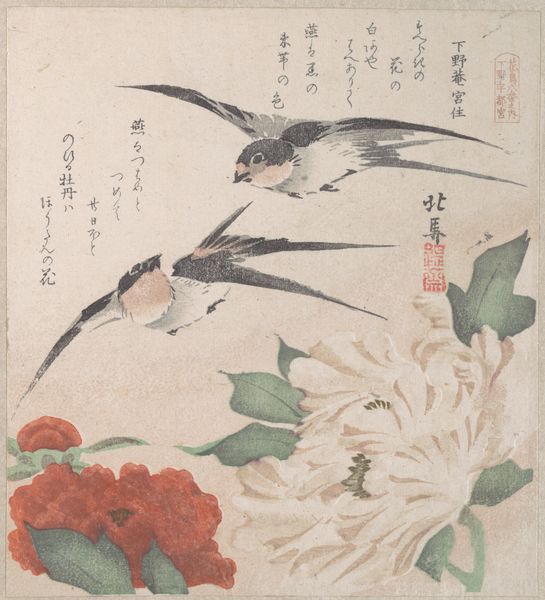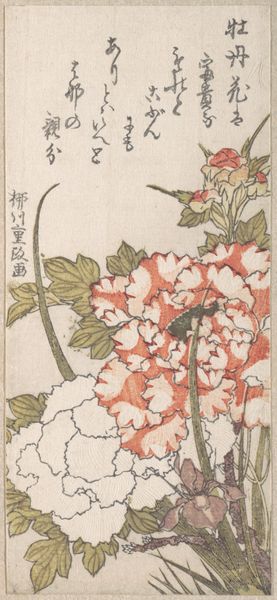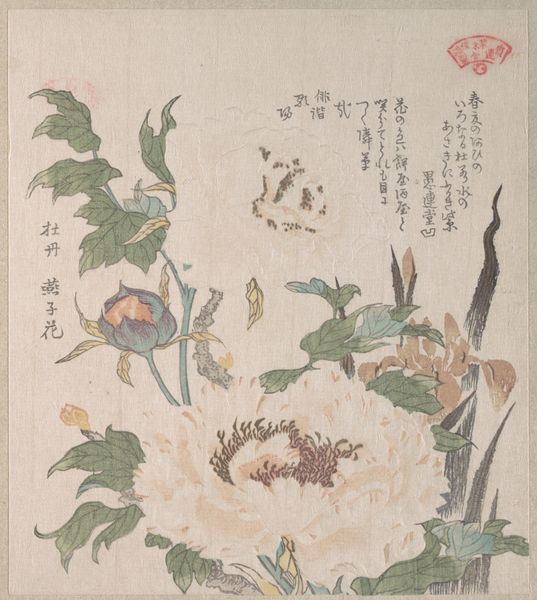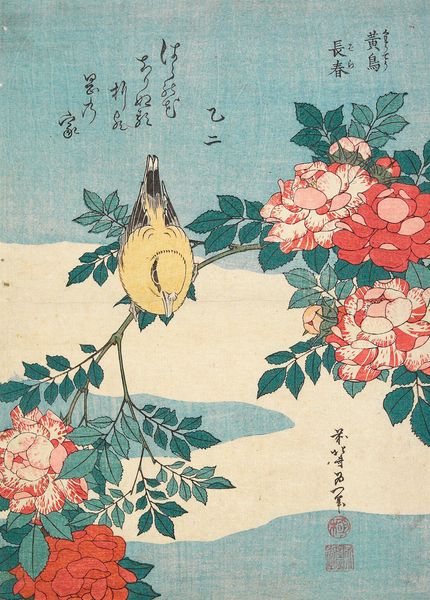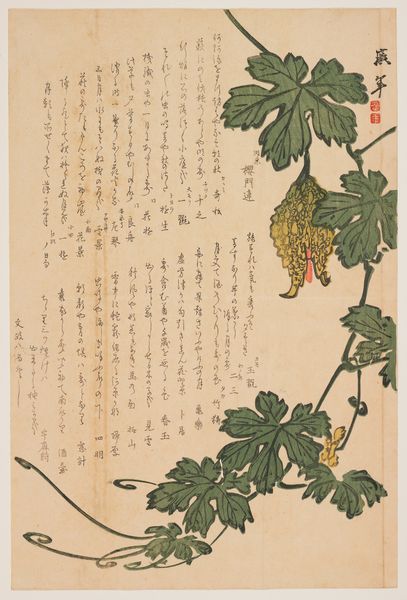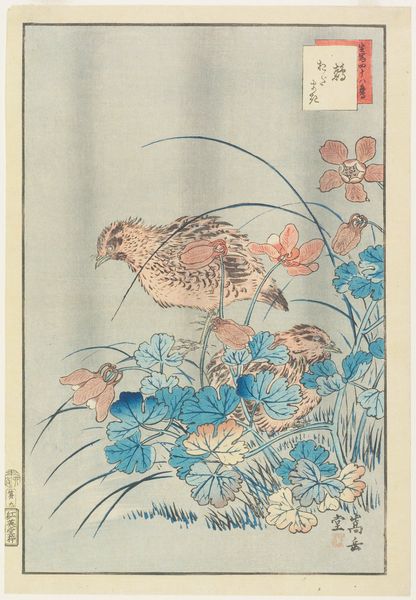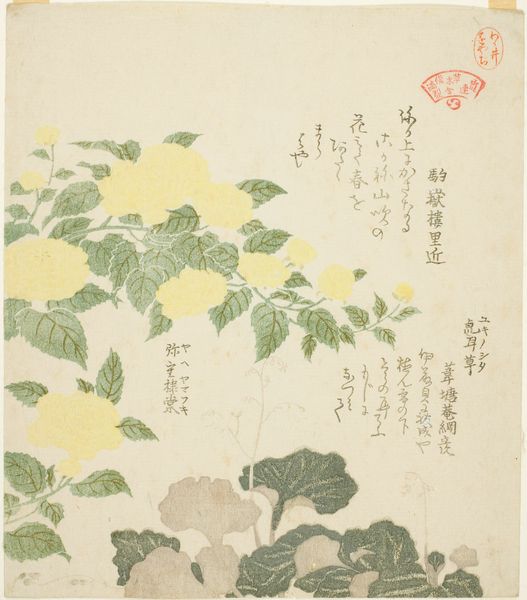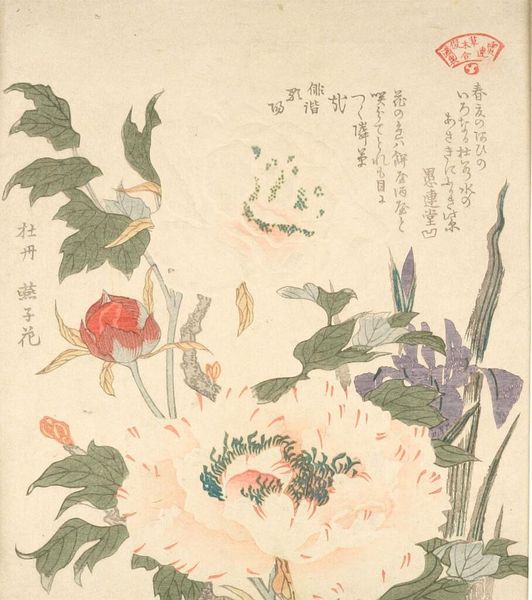
print, ink, woodblock-print
# print
#
asian-art
#
landscape
#
ukiyo-e
#
japan
#
pattern background
#
ink
#
linocut print
#
woodblock-print
#
flower pattern
Dimensions: 10 × 7 3/8 in. (25.4 × 18.7 cm) (image, sheet, vertical chūban)
Copyright: Public Domain
Katsushika Hokusai created "Peonies and Canary," a woodblock print, now at the Minneapolis Institute of Art. At first glance, the composition offers a structured asymmetry where vibrant coral peonies, set against a deep blue background, capture your attention. A small, intricately detailed canary appears to dive towards the blooms, animating the scene with its dynamic pose. This contrast between the static floral arrangement and the bird's active gesture is crucial. Hokusai uses the structure of the natural world to explore the symbolic intersection of beauty and transience. The peonies, symbols of wealth and opulence, are juxtaposed with the fleeting presence of the canary, suggesting a meditation on the impermanence of beauty and life. Consider also the flat, graphic quality inherent in the Ukiyo-e tradition. Hokusai masterfully uses line and color to flatten the pictorial space, emphasizing pattern and design over realistic depth. This flattening allows us to contemplate the relationship between representation and abstraction, and the enduring appeal of art as an idea.
Comments
minneapolisinstituteofart about 2 years ago
⋮
After the successful publication of his ten-print bird- and-flower (kachō-ga) series in the horizontal format (examples on view nearby), Hokusai released another kachō-ga series with the same publisher, Nishimuraya. The new set consisted of ten vertical compositions (three are on view) bearing a poem mentioning the featured flower. The Chinese-style poem at the upper right of this print is attributed to the Southern Song scholar Wang Shiming (1112–71). Double-flowered peonies from Yangzhou, the king of flowers in bloom this spring. The idea of cultivating plants as an elegant pastime was introduced from China as early as the 12th century and caught on among Japan’s aristocracy and military elite. By the Edo period, the hobby was pursued by all classes of society, even in thriving metropolitan areas like Edo. Peonies were especially popular, with blossoms of various colors, sizes, and types.
Join the conversation
Join millions of artists and users on Artera today and experience the ultimate creative platform.
